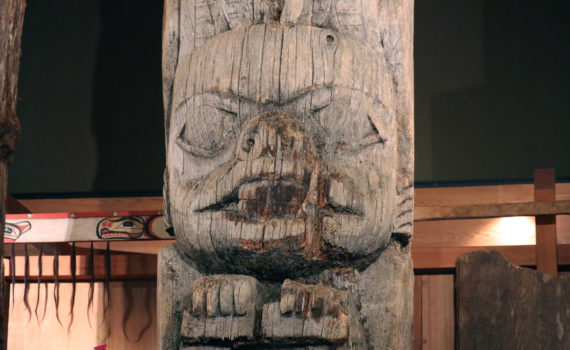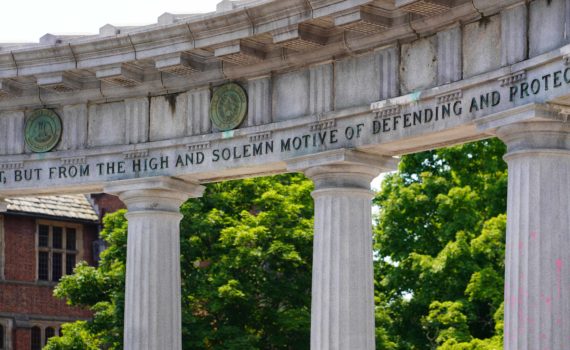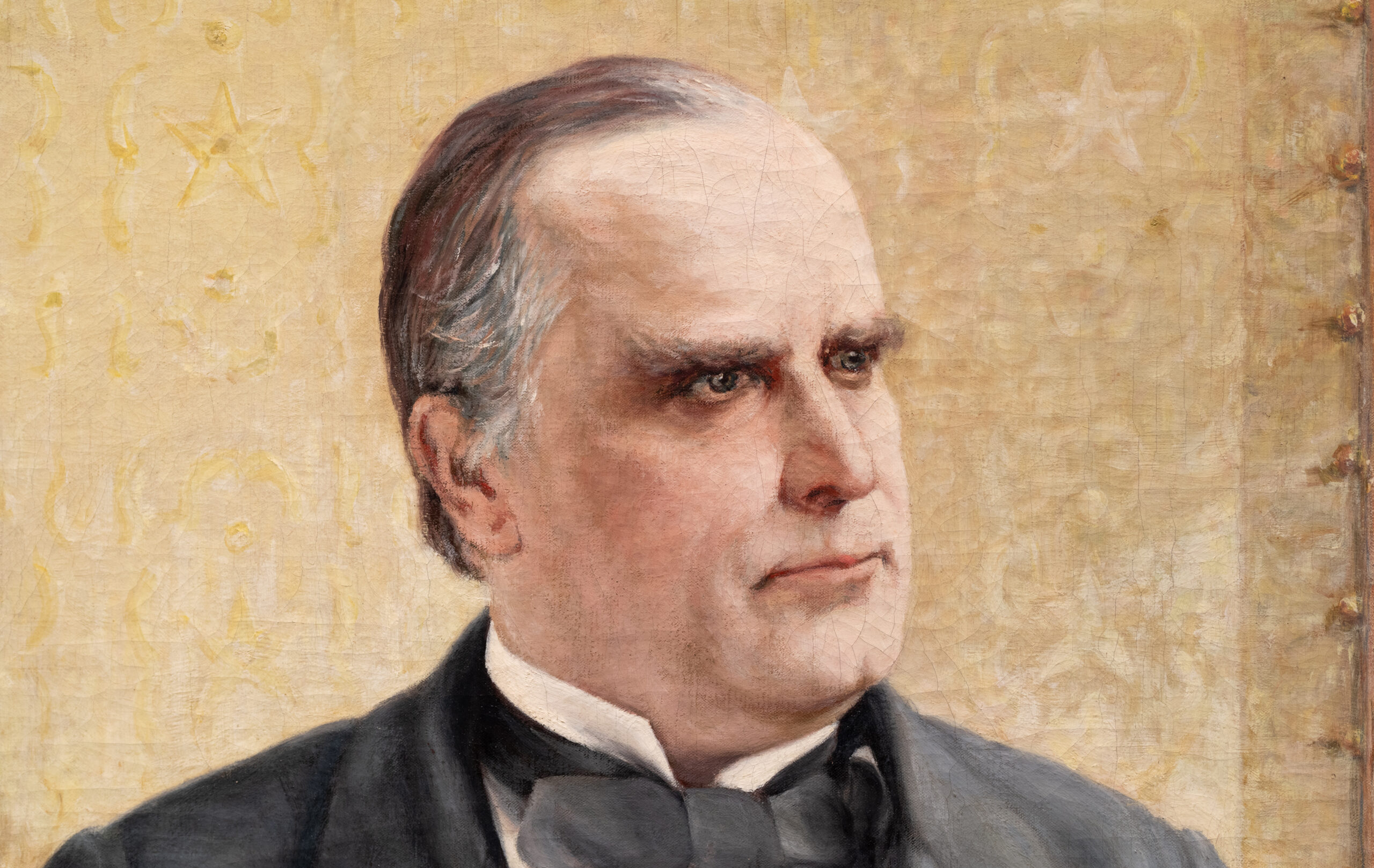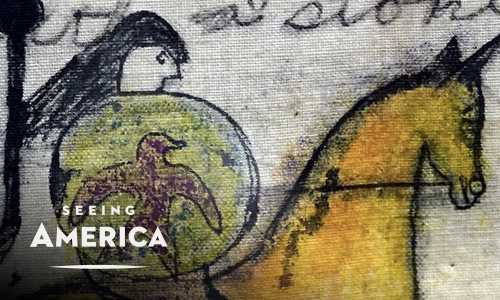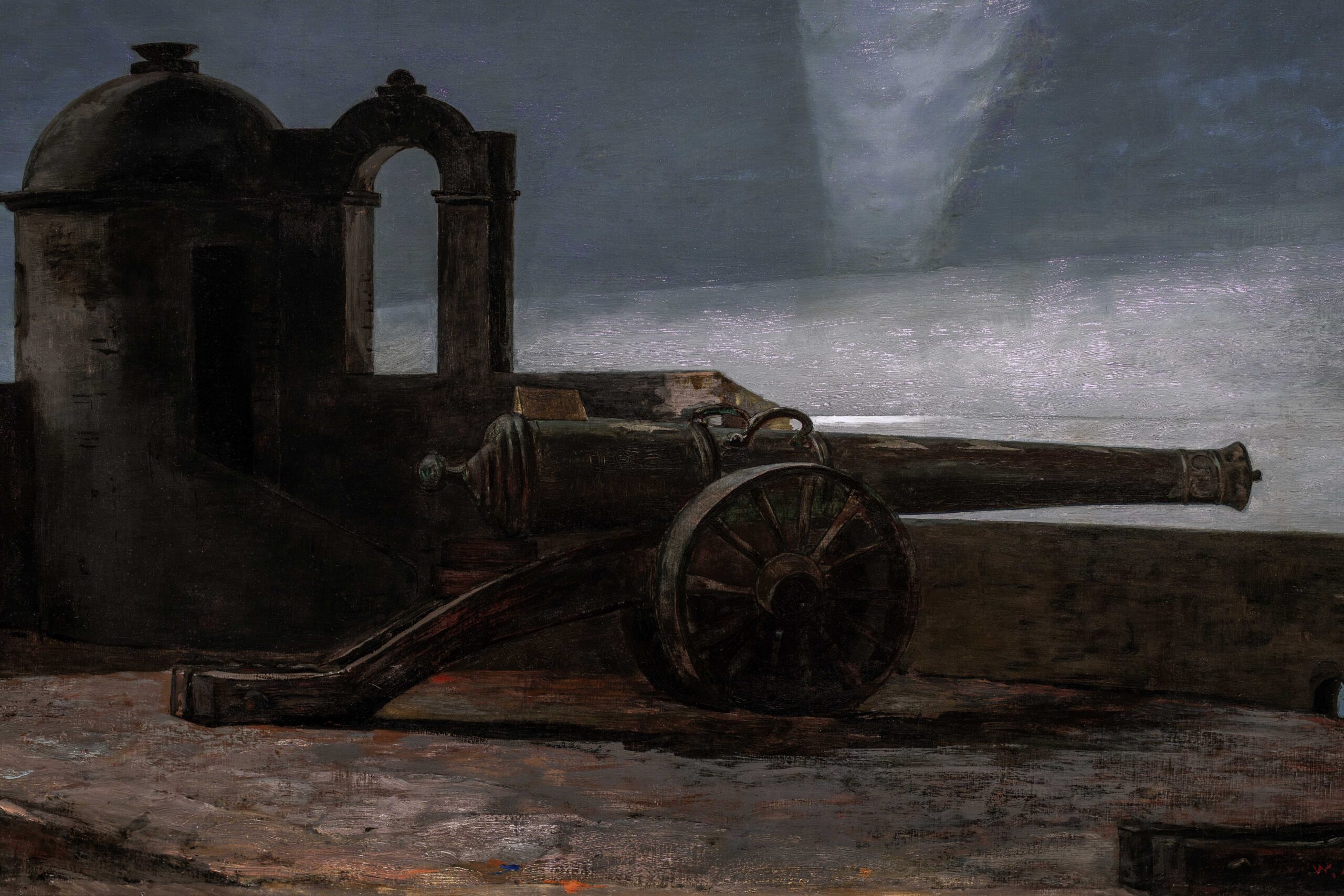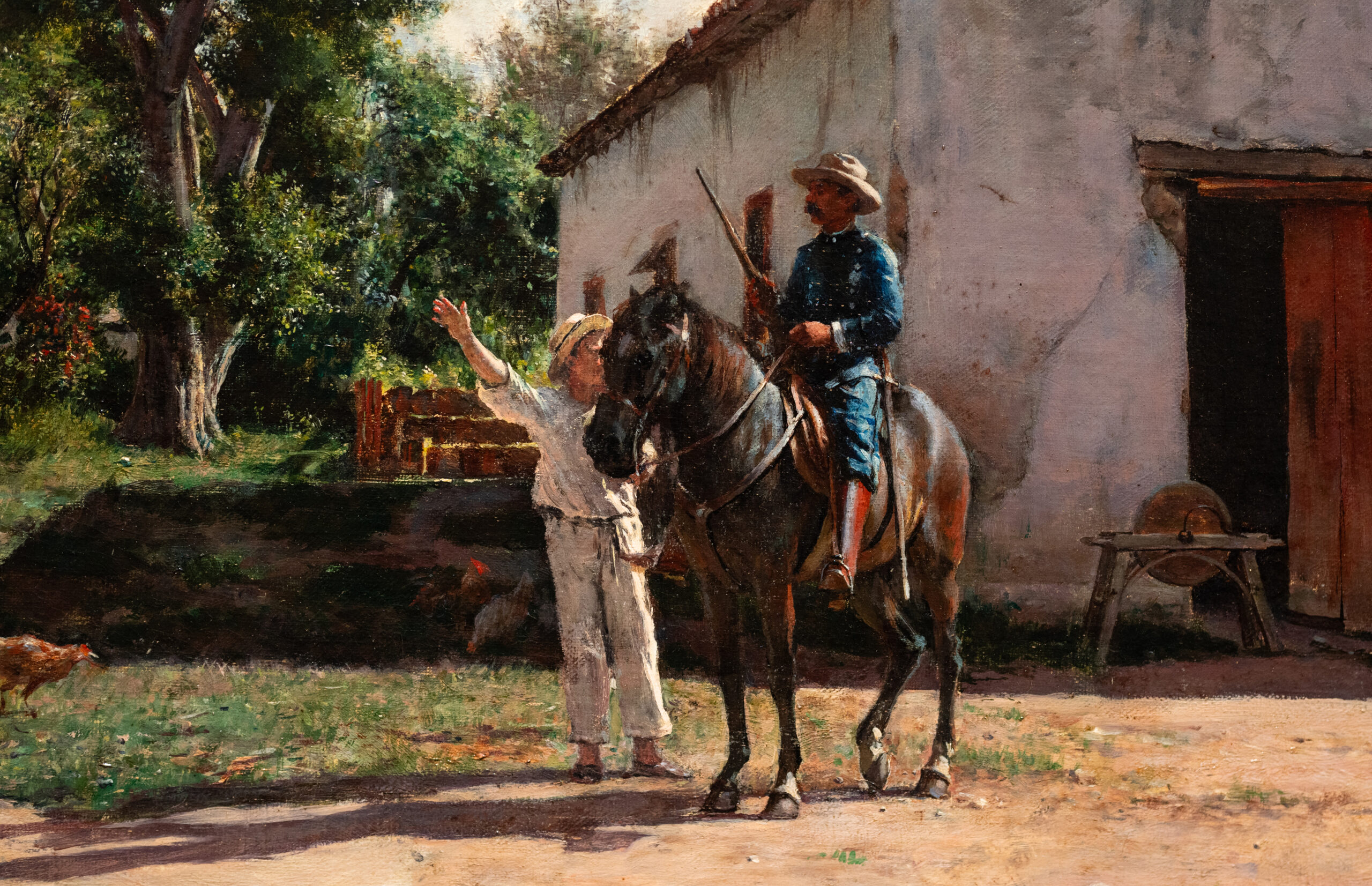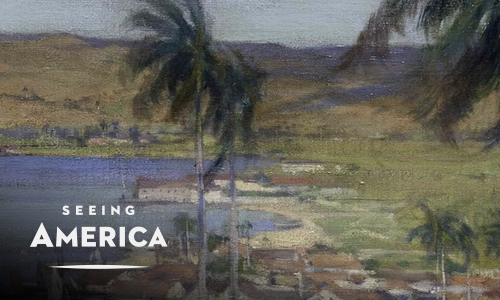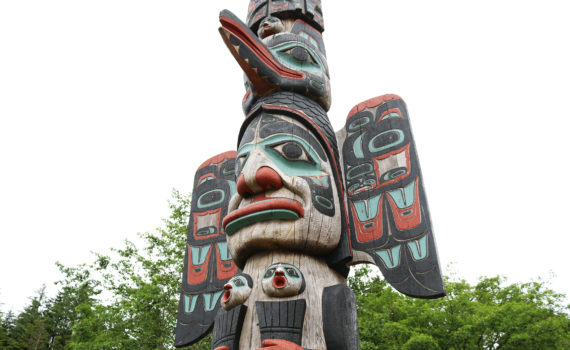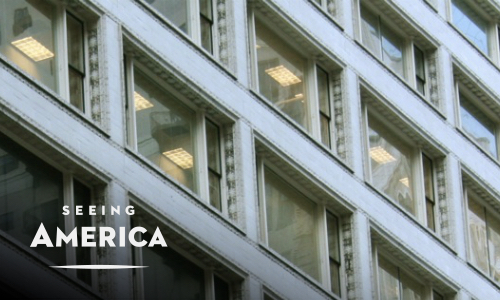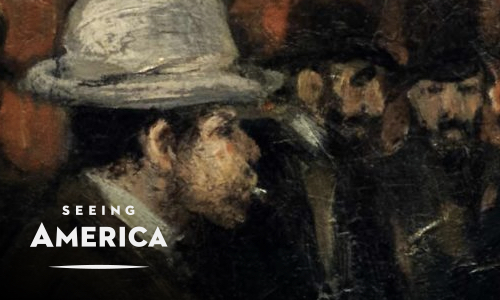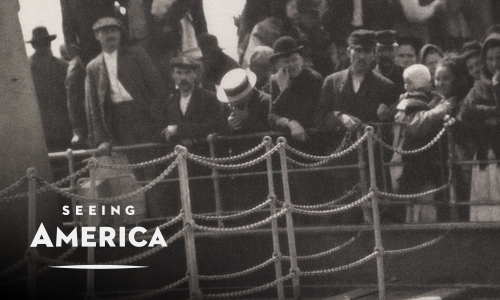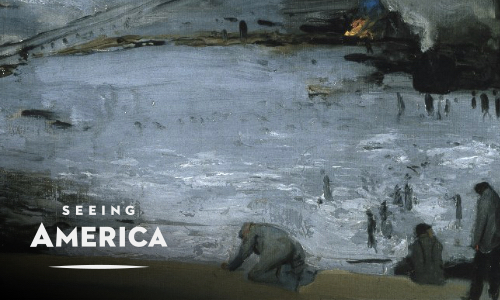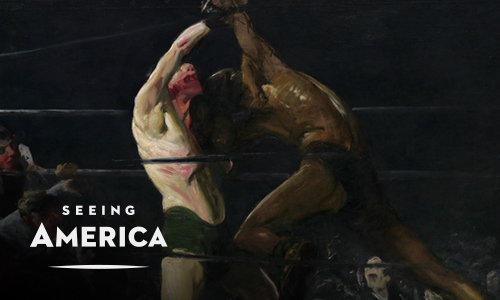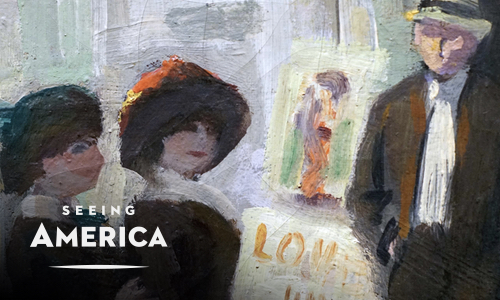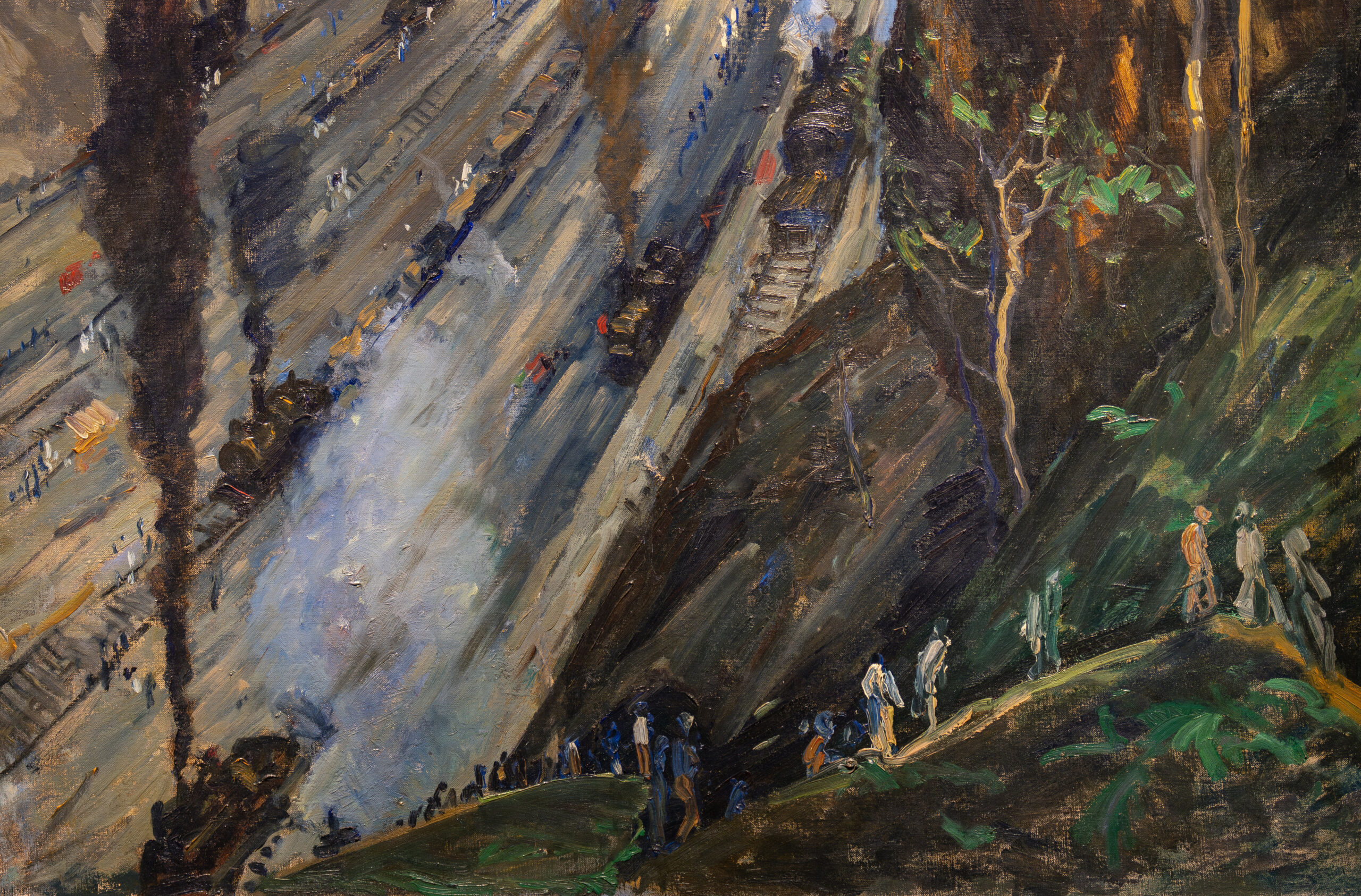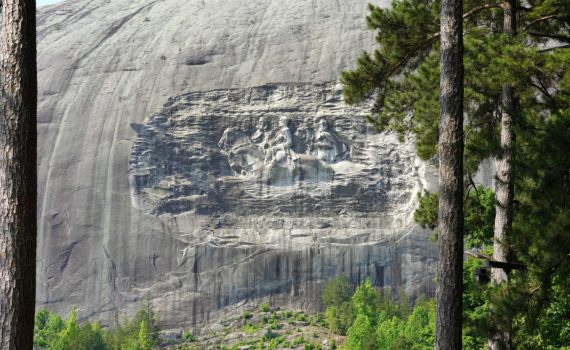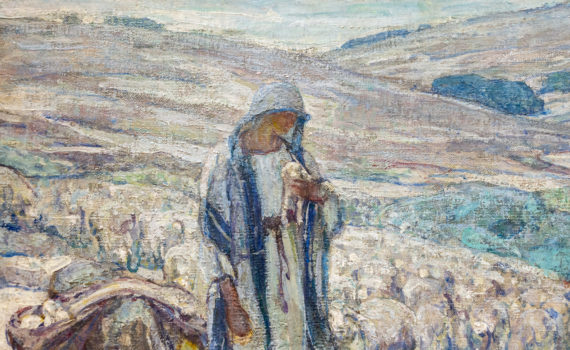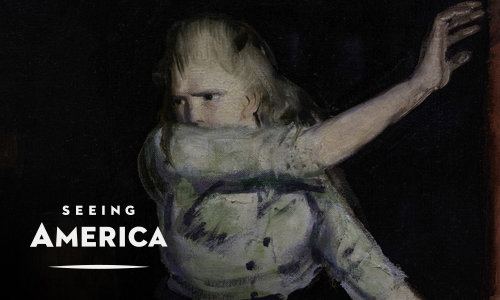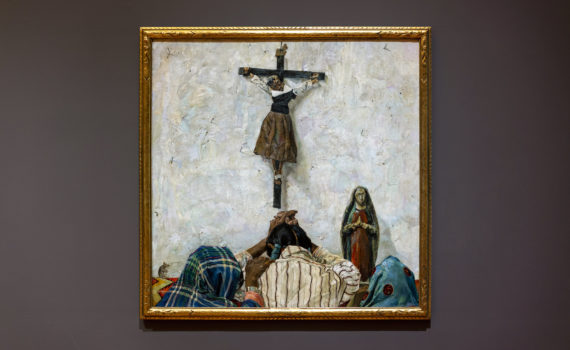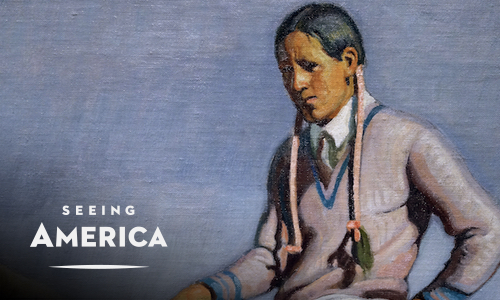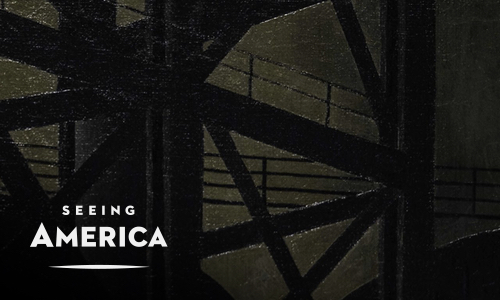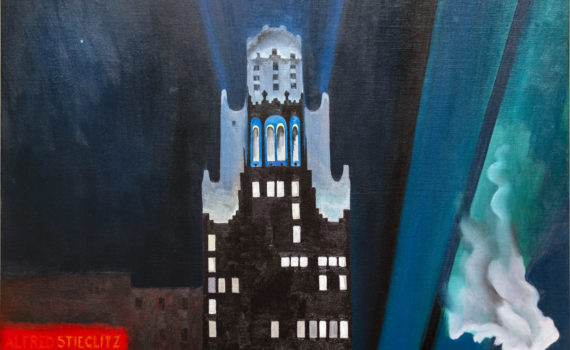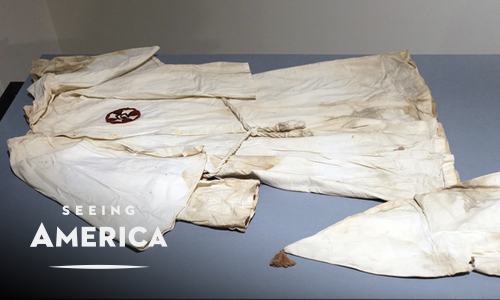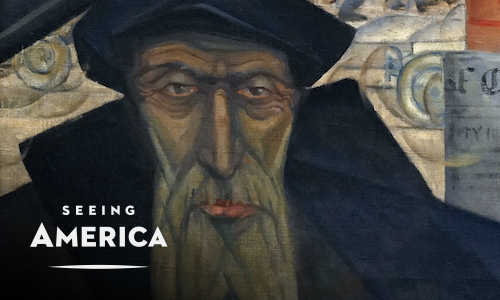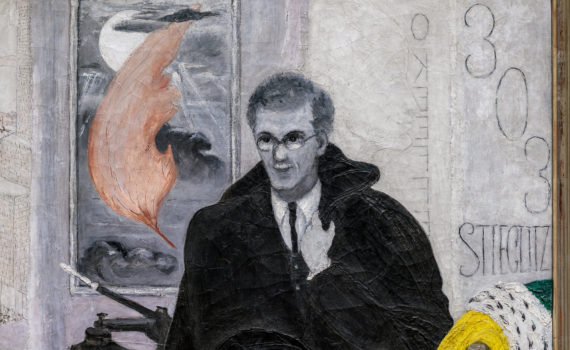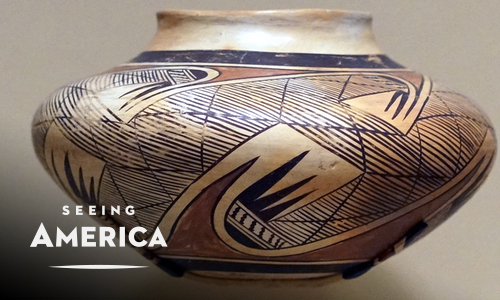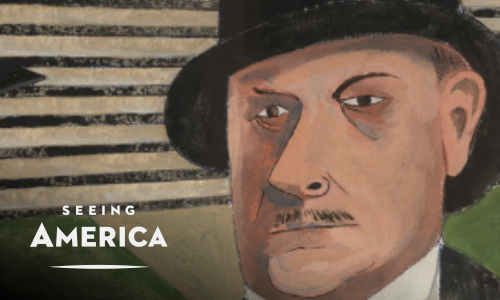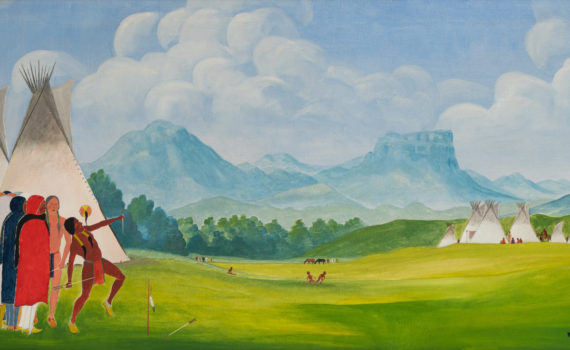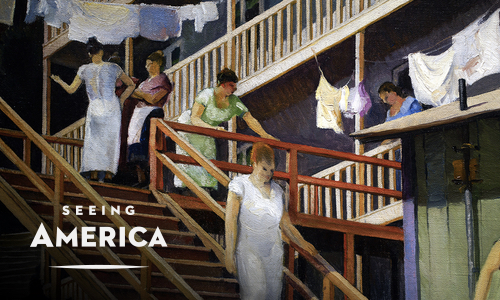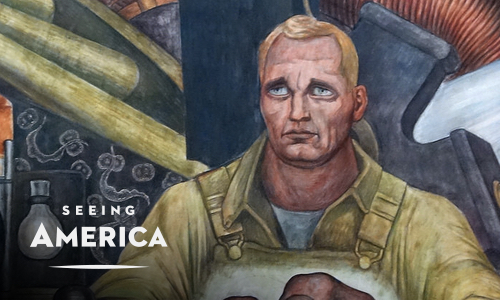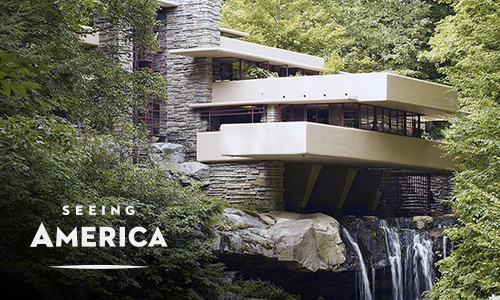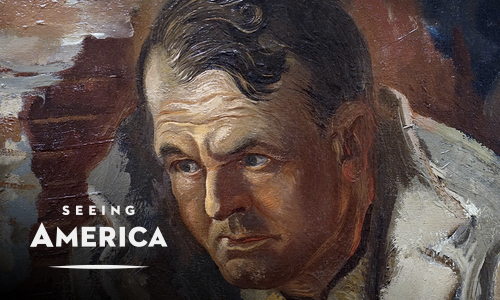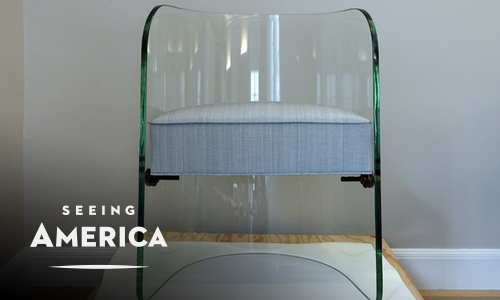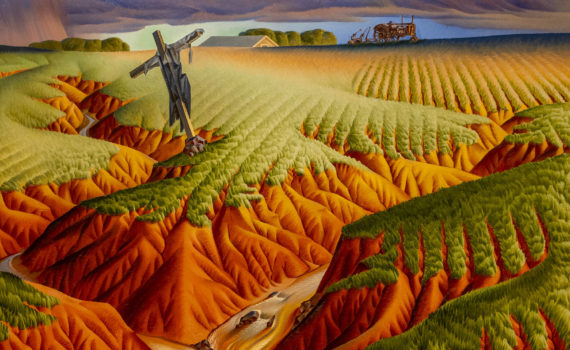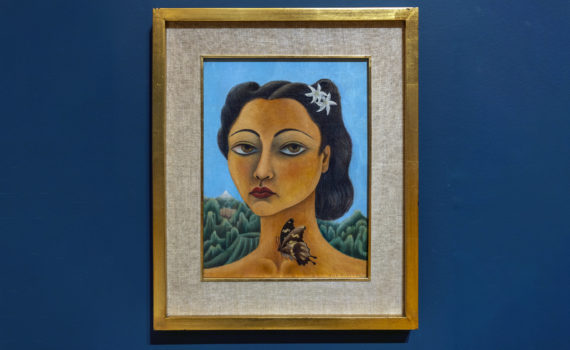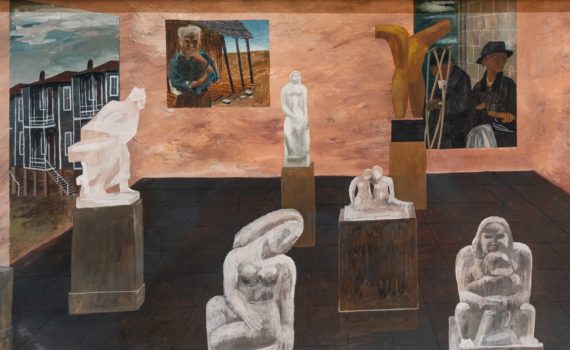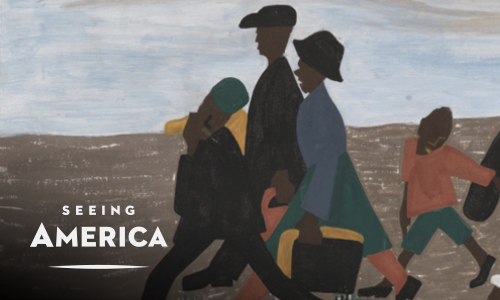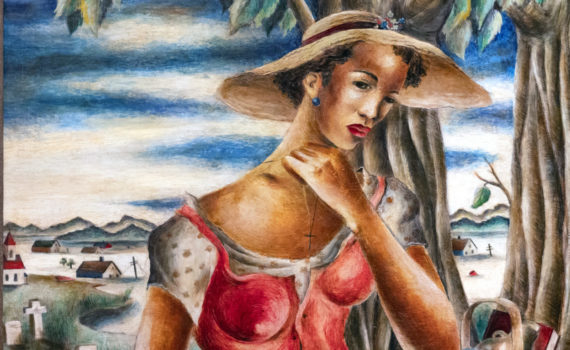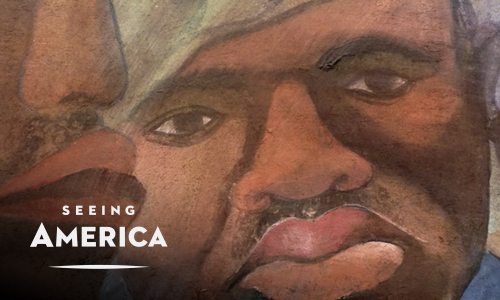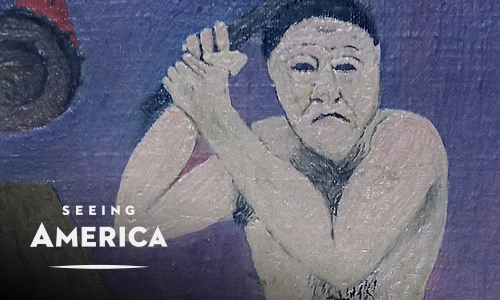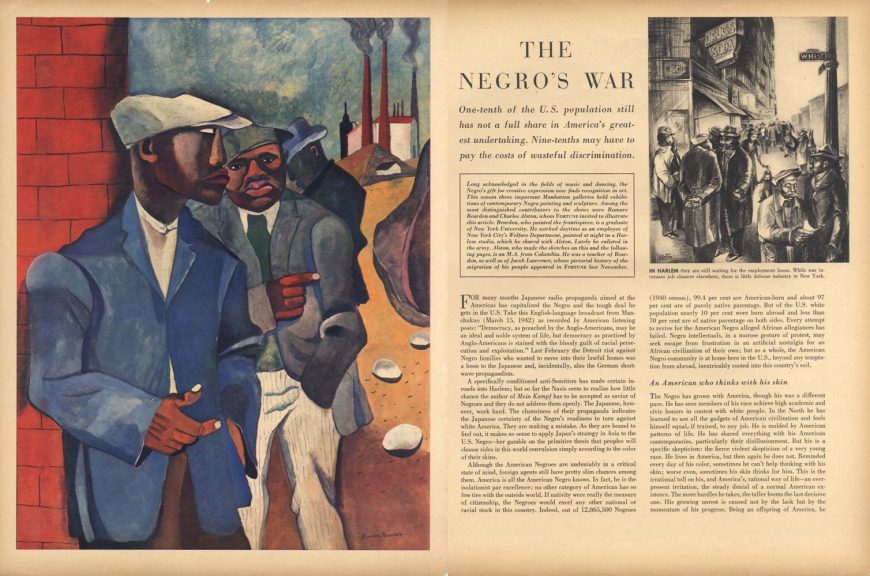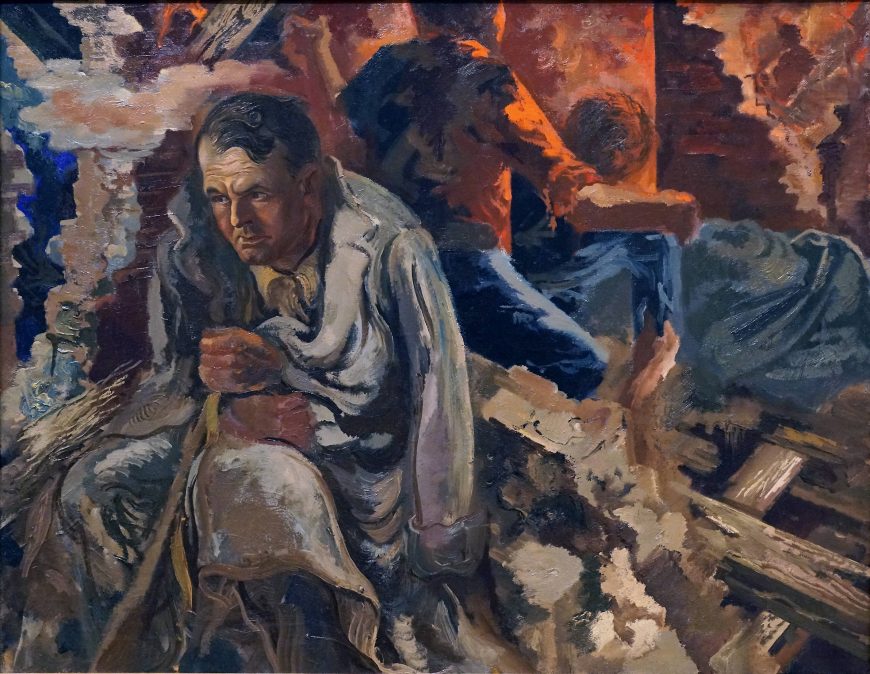
World’s Fair, St. Louis 1904 (Library of Congress)
Technology, Expansion, and Reform
Essay by Dr. Kelly Enright
Wondrous new innovations for modern life
From 265 feet above the St. Louis Fair of 1904, ferris wheel riders looked down on “palaces” dedicated to electricity, transportation, and “varied industries” whose halls held wondrous new innovations for modern life including an electric streetcar, private automobiles, wireless telephones, X-ray machines, and infant incubators.
From the turn of the century and through two world wars, Americans witnessed technologies that advanced transportation, business, and health. Mass culture spread throughout the nation via movie theaters, radios, and department stores. From the view on the ferris wheel, the narrative of American progress glowed bright in the electric lights below. But on the ground, Americans experienced the inequalities of industrial development spawned by an era of mass consumption.
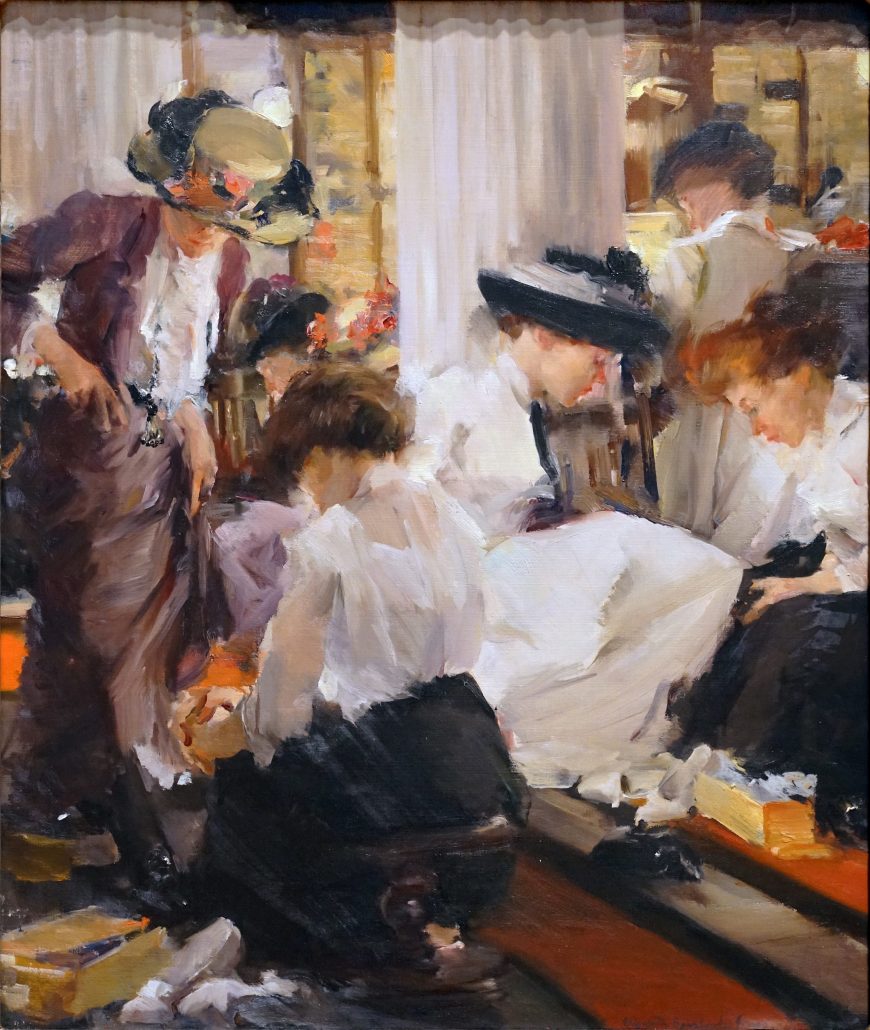
Elizabeth Sparhawk-Jones, The Shoe Shop, c. 1911, oil on canvas, 99.1 x 79.4 cm (Art Institute of Chicago)
The fair was a centennial celebration of the Louisiana Purchase. When planning began in 1898, the U.S. was engaged in war with Spain in both the Caribbean and the Philippines. Often sensationalized in newspapers through “yellow journalism,” the Spanish-American War was a topic of debate that revealed differing ideologies of America’s place in the world.
The war ended the same year it began with American acquisition of Puerto Rico, Guam, the Philippines, and temporary control of Cuba. Although many disagreed with the politics of imperial expansion, when the fair opened in 1904 the Philippines pavilion was among the largest on site and included a small lake where model ships reenacted battles from the war.
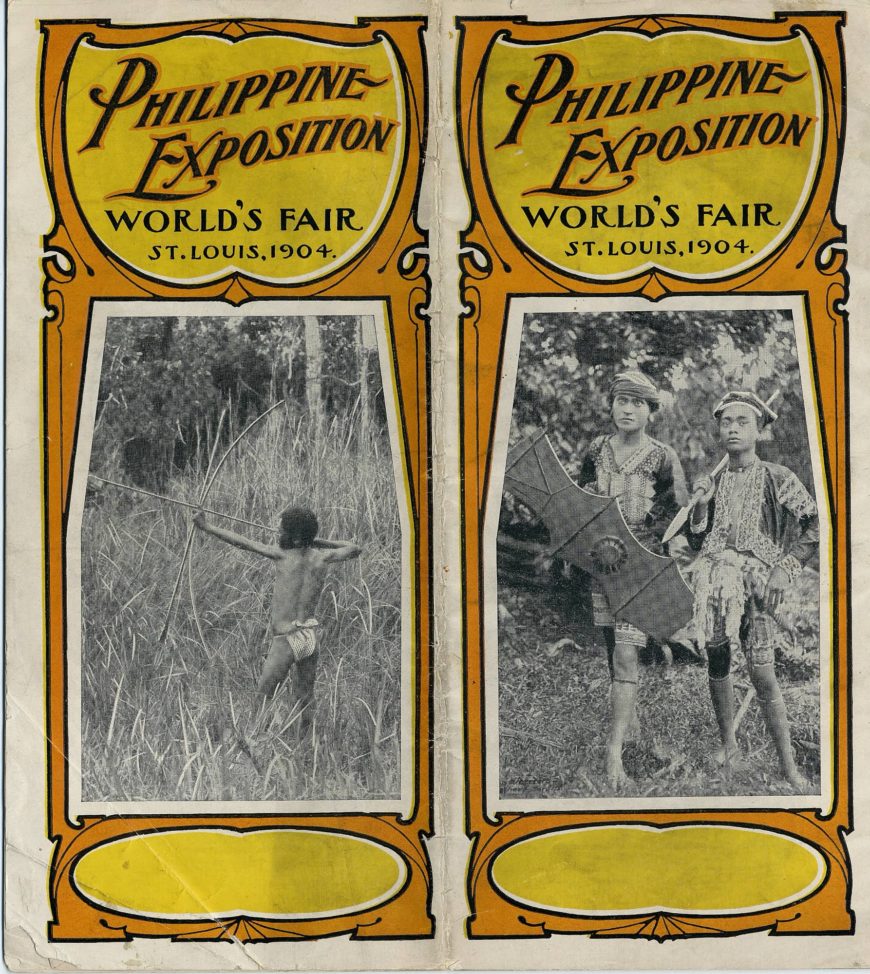
A booklet advertising the Philippine Exposition at the St. Louis World’s Fair, 1904 (Smithsonian Institution)
Rights and reforms
The processes that enabled mass consumption also created great economic divisions. As industrial production increased, monopolies came to dominate American business. Workers, photographers, and “muckraking” journalists sought to expose the excesses of big business and the horrific conditions of factory labor. In 1911, the Triangle Shirtwaist Fire killed 146 workers, many of them female or children, and most immigrants of Italian or Jewish descent. In response, 20,000 New York garment workers went on strike uniting across ethnic boundaries for the common goal of safety and economic opportunity. Other strikes followed around the country, spawning more organized unionization and activism for working conditions and fair pay.
The early twentieth-century saw more women entering the workforce in factories and offices, and as telephone operators or domestic servants. Charlotte Perkins Gilman, who inspired the term “feminism,” saw changes as the “spirit of personal independence” and encouraged women to leave the home environment which was preventing them from full freedom and social engagement.
Several female leaders emerged expounding similar ideas including Emma Goldman and Margaret Sanger. Some, such as Jane Addams, actively sought to help women improve their situations though housing, career training, education, and social services. After advocating for decades, women earned the right to vote in 1920.
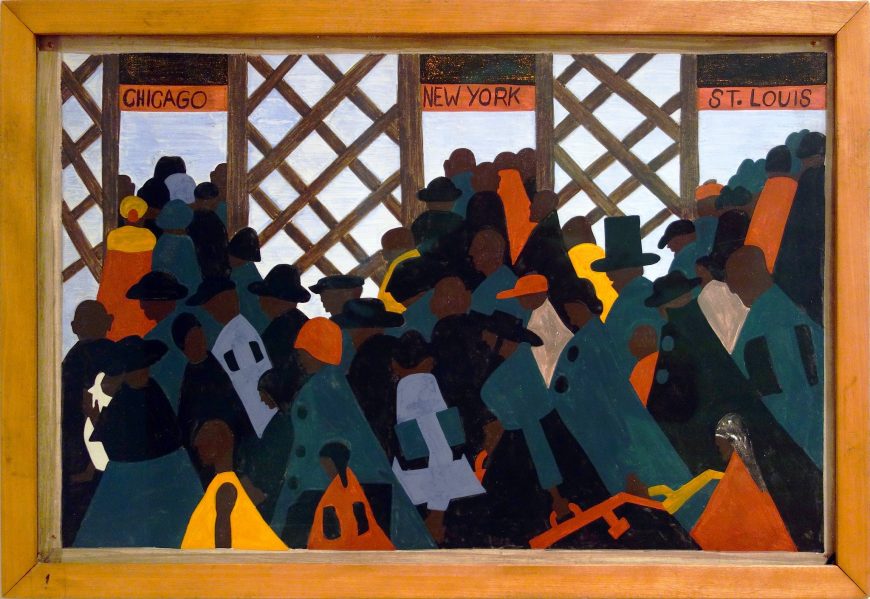
Jacob Lawrence, “During World War I there was a great migration north by southern African Americans,” from The Migration Series, 1940-41, 60 panels, tempera on hardboard (Phillips Collection, Washington D.C.)
Throughout the era, laws and intimidation tactics prevented African Americans from full participation in democratic society. Southern states enforced segregation of facilities arguing for a doctrine of “separate but equal” that the U.S. Supreme Court affirmed in its 1896 decision Plessy v. Ferguson. Even when similar schools and healthcare facilities were provided for the black population, they were not of the same standard as those offered to the white population. In 1900, no southern state offered a high school education to African Americans.
Thousands of black Americans made their way to the industrial cities of the North in the “Great Migration.” At the same time there was an explosion of literature, music, and art that has come to be known as the Harlem Renaissance or The New Negro movement. Artists and writers looked to black history—and specifically to the art of Africa—for inspiration, joining that to a modern African American identity (Romare Bearden, Aaron Douglas, and Jacob Lawrence, for example) .
Consumer society
Mass culture offered new forms of entertainment in vaudeville, radio, film, phonographs, dance halls, and amusement parks. Increased leisure time and transportation in the form of affordable automobiles like Ford’s Model T, which hit markets in 1908, made entertainment and tourism accessible for a wider variety of Americans. Mainstream culture flourished, but so did artistic expression beyond the center such as African Americans in the Harlem Renaissance and American Indians in a burgeoning Southwestern art and tourist market (see for example, Nampeyo).
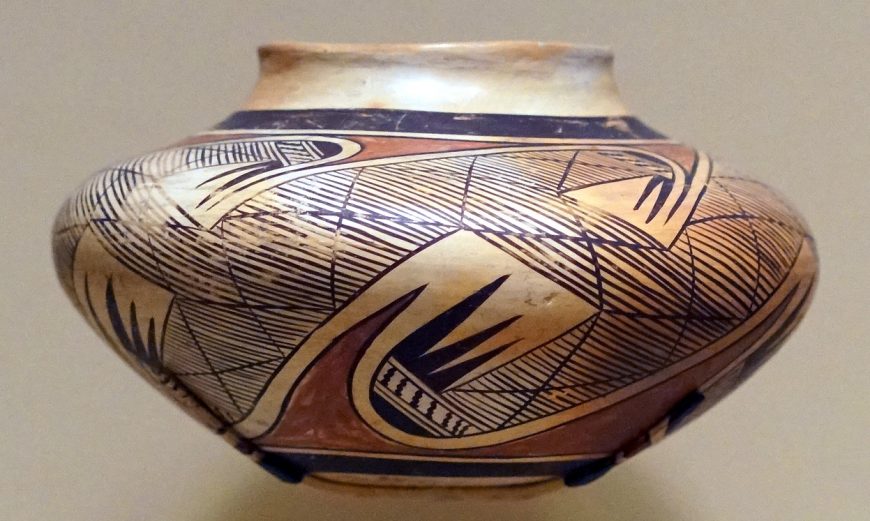
Nampeyo (Hopi-Tewa), polychrome jar, c. 1930s, clay and pigment, 13 x 21 cm (National Museum of the American Indian, Smithsonian Institution)
Mass culture and the growing entertainment industry spawned the Roaring Twenties—a time of carefree, youthful indulgence. When the Great Depression hit, that indulgence and optimism disappeared. Banks failed and people lost their savings, homes, farms, and businesses. Unemployment skyrocketed. Through its early years, federal aid came only for farmers and businesses; it did not reach those who needed it most.
In 1932, Franklin Delano Roosevelt promised a “new deal” for workers, winning the presidency where he remained for four terms. The New Deal actively placed restrictions on big business; sent direct aid to small businesses, farmers, and cultural workers; and created new jobs building infrastructure like roads, libraries, schools, and dams. It even employed cultural workers like photographers and artists who depicted Depression life and created public works of art. Anthropologists collected oral histories and folk songs.
The wars and the world
The U.S. initially sought not to be involved in World War I, though sympathy lay with the Allied Forces (The United Kingdom, France and Russia). In April 1917, however, Germany attacked American ships leading to the declaration of war. U.S. troops helped lead the Allies to victory in November 1918. President Woodrow Wilson imagined this was the “war that will end wars” (as H.G. Wells had written in 1914) and pushed the establishment of a League of Nations to keep peace, but in the end his own country favored isolation over involvement.
Isolationism remained strong during the start of World War II. Congress passed the neutrality act which banned the sale of war goods to fighting countries. In 1940, France surrendered to Germany and President Roosevelt sent supplies to England. The next year Japan bombed the U.S. naval base at Pearl Harbor and the U.S. declared war on Japan. After securing the European front at Normandy in 1944, the U.S. dropped two atomic bombs on Hiroshima and Nagasaki. Japan surrendered nine days later.
World War II increased opportunity for African Americans in the workplace with the signing of Executive Order 8802 preventing racial discrimination in federal hiring practices. Romare Bearden’s Factory Workers (1942) addressed such discrimination portraying workers being turned away from employment in the steel industry. Because the U.S. was at war with Japan, many people of Japanese descent living in the United States (like Ruth Asawa) were forced into internment camps, losing their homes, businesses, and freedoms.
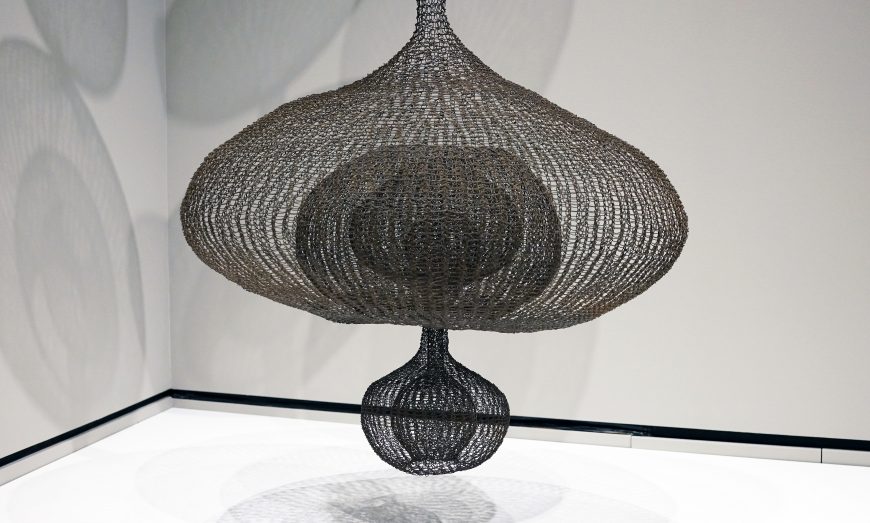
Ruth Asawa, Untitled, c. 1958, iron wire, 219.7 × 81.3 × 81.3 cm (Crystal Bridges Museum of American Art)
During the war, women took the place of men in many fields of employment, including factory work to produce supplies needed both at home and overseas. In order to recruit women, the U.S. government printed posters of a strong female dressed in a blue jumpsuit and red bandanna saying, “We Can Do It.” Rosie the Riveter is still an icon of working women in America. Beneath the icon, however, women experienced much lower wages than men for the same positions and, when the soldiers came home, were expected to give up their jobs and resume more traditional roles.
The horrors of the Holocaust stunned people around the globe. America had refused to admit many of the Jews who sought to escape Nazi persecution though some who had secured employment were allowed entry including the scientist Albert Einstein. The United States was immeasurably strengthened by the many brilliant immigrants who fled Europe including composer Igor Stravinsky, author Thomas Mann, architect Walter Gropius, and artist George Grosz whose painting Remembering speaks the agony of have left friends and family behind in Nazi Germany.

